Preamble
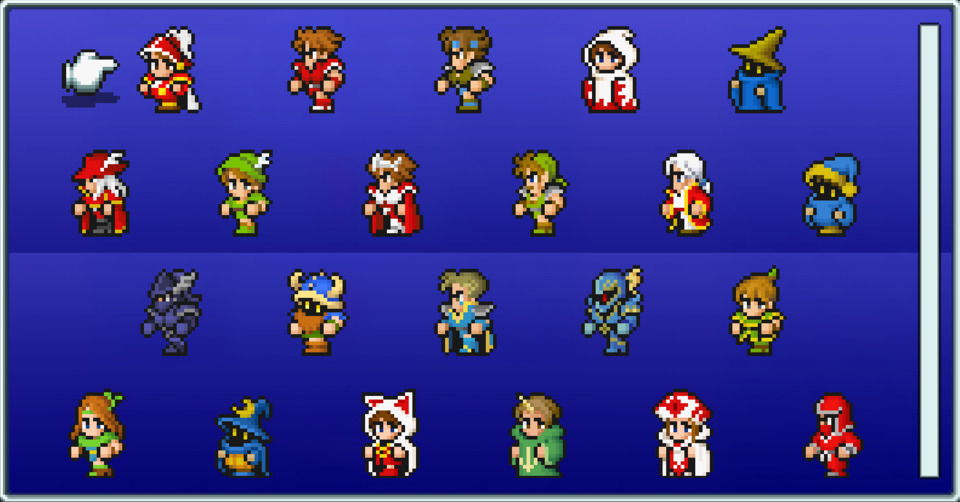
Last month, I wrapped up my retrospective on Final Fantasy III, and while it is not a game I would ever recommend to a layperson, it is a game I deeply respect. Despite its MANY, and I do mean MANY, problems and shortcomings, playing the game provided me with a better understanding of how the original Final Fantasy team ended up reaching the narrative highs of Final Fantasy IV and VI and the in-depth mechanical trappings of Final Fantasy V. Final Fantasy III is vital to the evolution of the series in several ways and the most prominent example stems from its job system which codified many of the character jobs and character types the series remains married to even to this day. Even with the release of Final Fantasy VII Rebirth, recurring series conventions still borrow from the tome of knowledge that Final Fantasy III instituted, which is a sign that there's some form of vestigial DNA from Final Fantasy III still informing the development of games in the series.
Whenever I cover a Final Fantasy game emphasizing jobs or character-specific tech trees, I usually relay my rankings on what jobs and characters made my experience more manageable. I did not do that with my Final Fantasy III retrospective because I wrote enough about each of Final Fantasy III's jobs and how they can be seen in subsequent Final Fantasy games to warrant it being a separate feature on the site. I wrote so much about these jobs and their connective tissue with future Squaresoft and Square Enix titles that I even needed to break this deep dive into two parts. Furthermore, I pushed myself with this mini-series in that I made contemporary or modern comparisons for each of Final Fantasy III's jobs in subsequent Final Fantasy titles. I might have a brain illness.
Nonetheless, here are the ground rules for this mini-series. First, I assure you that I played every job in Final Fantasy III at least once. That doesn't mean I used every job as exhaustively as possible, but I did give each job at least thirty minutes of my time. As you can deduce from my retrospective, I developed job preferences, especially at the end of the game. In general, I used well-known heavy hitters for as long as possible, and for the jobs that had apparent shortcomings and issues, I ditched them after realizing it would be a complete chore to make them hold their weight in combat. Second, and as if it weren't already clear, my experience with Final Fantasy III is mostly clouded by the Pixel Remaster version of the game. I did play the 3D remake, but that game is challenging, and after getting my ass kicked one too many times, I gave up. I know many lower-ranked classes I will harp about are better in the 3D remake. As such, I will make special notes about how jobs have changed over time.
Finally, I mixed things up as much as possible for my modern comparisons. Sometimes, I looked at a job type and thought of other representations of that job in subsequent Final Fantasy games. However, there were times when the core conceit of one of Final Fantasy III's jobs reminded me of someone or something from far left field. I'll include more digestible examples for every job, but there are some deep cuts that, at least in my mind, communicate how profound Final Fantasy III's influence is on the series. Also, my comparisons will be limited to Final Fantasy games from Final Fantasy IV forward. Saying the Warrior in Final Fantasy III is similar to the Warrior in Final Fantasy I is a no-brainer. I will also allow for spin-off games because there are a handful of examples I cannot ignore that feel entirely apt. Likewise, if you can think of a comparison I missed, feel free to share it in the comments, and I might even edit this post to include your suggestion with credit. So, without further ado, let's jump into it!
Default Class
Onion Knight - [Rating: D+]
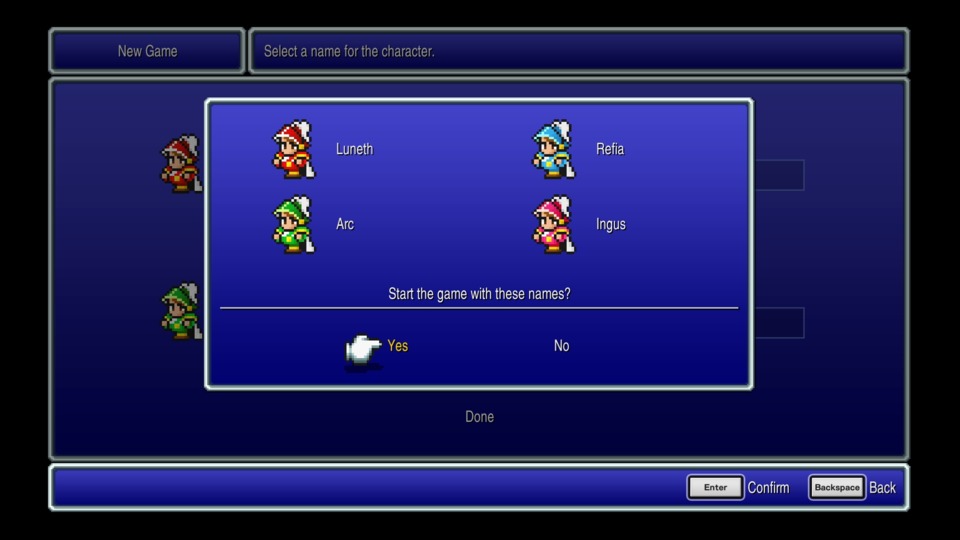
The Onion Knight is OG Final Fantasy III's starting job, and it has neutral to bad starting stats and is greatly limited in its usable equipment. It is a job you should throw into the trash the minute you encounter the Wind Crystal. Yes, I am aware that when your characters reach level 90, it becomes a beast, but who in their right mind has the time or patience to do that outside of people who have to see everything in the games they play? The rule here is that once a character reaches level 90, the Onion Knight adds points to a character's core stats upon each subsequent level up while using the job. Furthermore, the "Onion" equipment is the best weapon and armor set in the game. I have never seen this exponential growth in action, as I value my time. With so many other job options at your disposal that are immediately good, it's hard to justify using the Onion Knight more than the brief moments when it is required. Nonetheless, there is a light at the end of this class's tunnel, hence the plus at the end of the grade.
Changes for the 3D remake - This is a weird one. The 3D remake changed its starting class to that of the "Freelancer," which starts with the ability to use all non-specialized weapon types (i.e., they can't use Bells or Harps). The 3D remake also allows its starting class to use level one White and Black magic. The 3D remake does indeed have an "Onion Knight" job. Still, you only unlock this job if you complete the Mognet sidequest, which, if you are using the DS version, is now impossible to complete because it requires the DS wireless service that got shut down a while ago. It's still doable in the PC release, but the Onion Knight is essentially a secret job that is even more powerful than the Ninja. It can use every weapon outside the job-specific ultimate armaments and every Black and White magic spell. Unfortunately, the Mognet questline involves you tackling a bunch of late-game optional dungeons that are not a ton of fun. The best way to view the Onion Knight in the 3D remake is the same way you likely view the bonus jobs and dungeons in the GBA version of Final Fantasy V. If you want to make Final Fantasy III an even more harrowing experience, than it already is, feel free to have a stab at the optional content in the 3D remake. However, it is to be avoided at all costs for the rest of us.
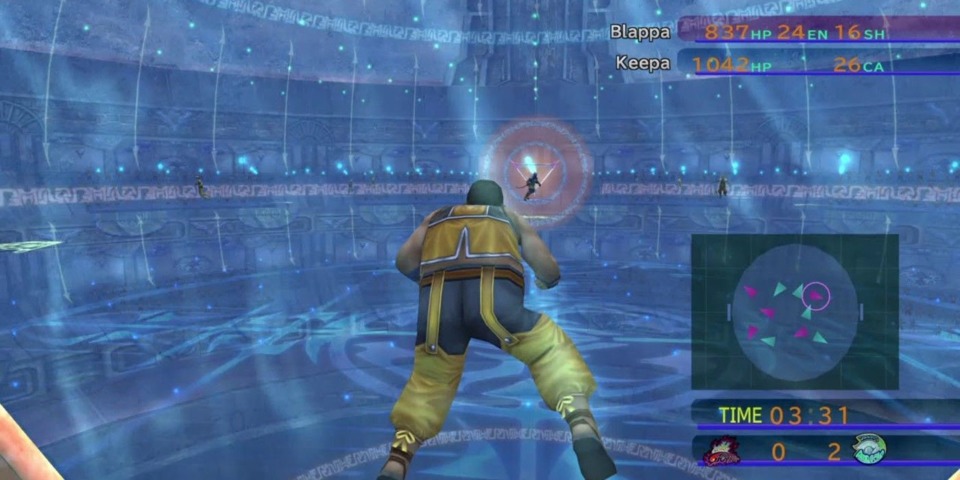
Alternate Franchise Examples - Out of principle, I will disqualify the Onion Knight from the 3D remake when drawing comparisons. What we are trying to think about here are examples of characters that start underpowered and, over time, become the best at what they do. There are plenty of examples of the Onion Knight's stat growth throughout the series, as it has become a slight series hallmark and Easter Egg for diligent players. However, if you ask me, the best example of what represents the heart of the Onion Knight is found in Final Fantasy X. I know people HATE Bliztball, considering the game forces you into a match against an elite team with a group of bums as your teammates. However, Final Fantasy X's Onion Knight is staring right at you during this required match. That Onion Knight is none other than Keepa. Though it is a chore, once you get Keepa's levels high enough, his stat growth makes him the best Blitzball player in the entire game, and it's not even a contest. However, as with the Onion Knight in Final Fantasy III, you must be an absolute MANIAC to see this stat growth happen in-game.
Wind Crystal Classes
Warrior - [Rating: B]
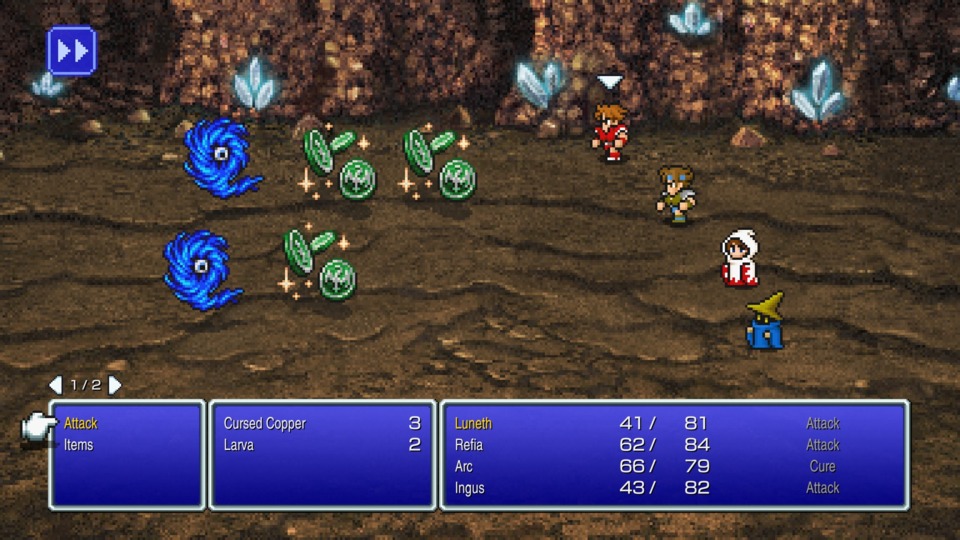
Until it gets replaced with the DPS options unlocked in the following two crystals, the Warrior is your martial class workhorse. It is straightforward and has a robust assortment of no-nonsense weapons and equipment to utilize whenever you visit a new town or city. When you enter a weapon or armor merchant, you know exactly what to get your Warrior, and how to make them stronger. The only thing holding it back is a problem that plagues many of the early jobs in Final Fantasy III. When you start unlocking further classes, the Warrior falls to the wayside, and there's little reason for you to return to it. It has decent stat growth, but subsequent jobs dwarf it mightily later in the game. Nonetheless, you'll likely have at least one in your party for a while and won't be complaining when you see it dole out damage at a steady rate.
Changes for the 3D remake - The 3D remake keeps things simple with its version of the Warrior. It allows it to use axes on top of its previous assortment of equipment and provides it with a new "Advance" ability. This maneuver allows the Warrior to deal an attack that does more significant damage at the cost of its defense stat being reduced for a whole turn. If that sounds familiar, you probably are thinking of a particular Final Fantasy character with this exact ability. Otherwise, the Warrior's stat growth is more balanced, though still skewed towards martial class categories, but still a step or two behind the DPS jobs unlocked in the following two crystals.
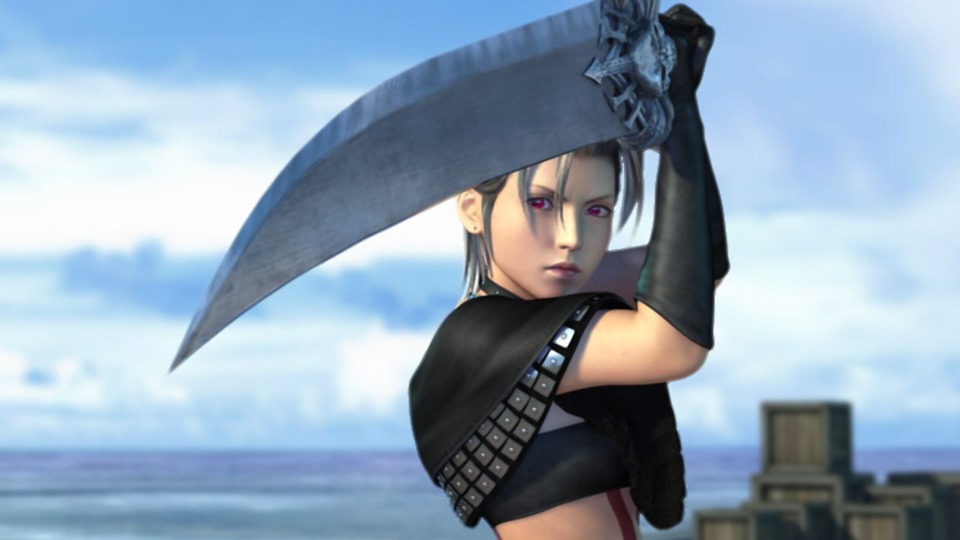
Alternate Franchise Examples - I was split on this one. I wanted to give the nod to Ramza from Tactics, but their Mettle commands provide way more non-DPS utility for me to brandish them as a classic Warrior. To me, a Warrior gets the job done through purely grognard ways and remains in your rotation because you know what they bring to the table. A far better fit would be Steiner from Final Fantasy IX. Steiner hits HARD and gets almost all of his defense from wearing heavy armor when everyone else around him is well below that, and he gains new swords and weapons that dole out massive damage. He's a straight arrow in a game with many odd hybrid-like characters, and there's something deeply nostalgic about using him because you don't have to think too long when mulling over his battle menu. HOWEVER, Steiner is a knight with splashes of Samurai in his DNA, which leads us to a weird truth about the Warrior class in the Final Fantasy series. While considered one of the "classic" jobs of the series, the Warrior job is always a stepping stone to bigger and better things and there are not a ton of examples of "true" Warriors that stay in that lane from start to finish. The closest you can get to that is Paine in Final Fantasy X-2 who starts as a Warrior and her ultimate transformation is aligned towards dishing out hard-hitting attacks with very little strategizing required from the player.
Monk - [Rating: C+]
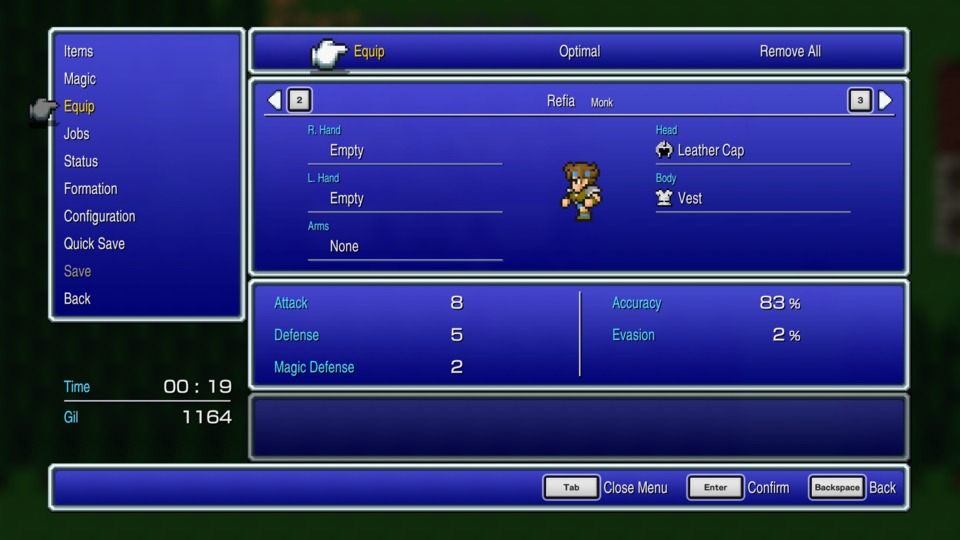
Final Fantasy III's Monk is a disappointment compared to Final Fantasy I's. III's Monk still does a decent amount of damage, and I'd advise you to have one in your party because it saves money and allows for the Warrior in your party to be decked out in better equipment, thanks to a lack of competition. Nonetheless, the power curve with this class is gradual, and by the time you see the fruits of your labor, you're likely nearing the point when you want to ditch it in favor of better alternatives. It does not help that the Black Belt is a better version of the Monk by every possible metric. "It's fine" best describes how I feel about Final Fantasy III's Monk. At the very least, seeing the Monk use nunchakus is fun.
Changes for the 3D remake - The Monk is another job that receives minor changes in the 3D remake. That means they are even less likely to be in your party rotation as they cannot keep up with the classes that have been significantly buffed. First, the best non-fist weapons are brass knuckles instead of nunchakus, which is a significant cosmetic downgrade if you ask me. However, they gain a new "Retaliate" passive ability wherein they counter-attack upon taking damage from any enemy. This ability can be helpful, but with the Monk likely only using its fists, it is up in the air if any of the damage it does during counter-attacks even matters or is noticeable, especially when it comes to gimmick bosses. That said, your character's Attack stat goes up by two points every time you level them up as a Monk, making it a worthy addition for even a brief period.
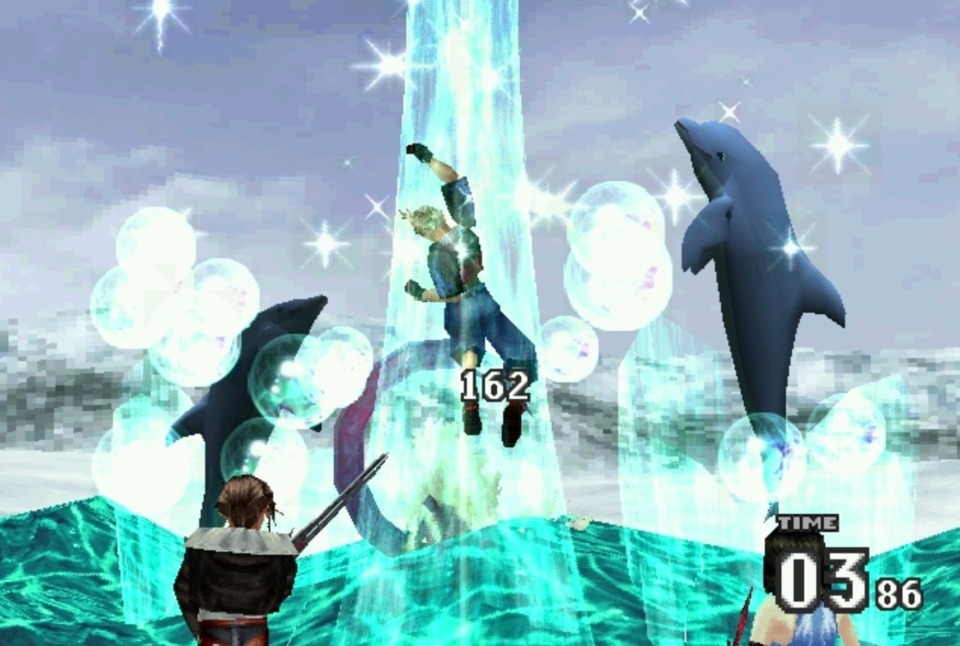
Alternate Franchise Examples - Obviously, it is between Tifa and Sabin. The two represent the most iconic fist-based damage-dealing attackers the franchise has ever seen, with Zell Dincht from Final Fantasy VIII as a close third. That said, I enjoy seeing dolphins bursting in the background whenever my character performs a limit break, so bonus points for that. Sabin might get the nod, considering he's more of a monk in the purest sense. I like to think the elemental damage some of his Blitzes do is incidental to the physical toll they take on their victims. Tifa and Zell, through their respective game's magic systems, can utilize Black and White Magic relatively quickly. If you want a character who fights barehanded in combat, consider Prishe in Final Fantasy XI. She even has a bit of Diablo's Monk in her DNA, as she can cast healing spells while demolishing the things she punches.
White Mage - [Rating: A-]
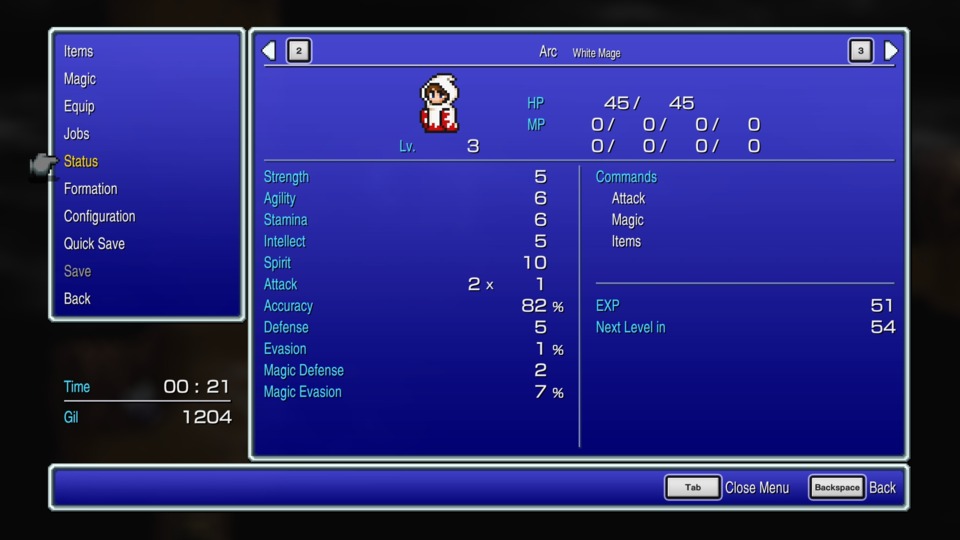
With Final Fantasy III lacking the open-ended gameplay of Final Fantasy V, completing the game without using the White Mage is impossible. The good news is that, outside of the Mini-based dungeons, you don't feel like that impedes you all that much. Instead, the programming team decided to give this version of the White Mage some offensive spells like Aero and Aeroaga so they can contribute to damage dealing when you don't have any obvious healing targets. Using staves is another option if you want them to deal even more damage against bosses with elementally focused weaknesses, but at the end of the day, you need to heal, and this job gets that done. Like some other classes, it's held back because it has not one but TWO jobs that replace it from your rotation. However, it remains a fixture in your parties for hours upon end and rarely feels like a hindrance, and that's worth something.
Changes for the 3D remake -THEY MADE THE WHITE MAGE WORSE! I do not know why they did this, but the White and Black Mage gain fewer additional spell slots with every level up in the 3D remake for their first FORTY LEVELS compared to their Famicom/Pixel Remaster peers. For example, at level ten, the 3D White Mage has thirteen level one spells, two level two spells, and one level three spell. The number of level two and three spells you get is HALF the number the original version provides! Likewise, the higher-tier spells unlock later than in the Famicom version. For example, level five spells unlock at level twenty in the Famicom version, while they unlock at level thirty in the 3D remake! The good news is that the White Mage's spell slots experience a quadratic growth rate at higher levels in the 3D remake, while they have a linear one in the Famicom and Pixel Remaster versions. Nonetheless, getting to that point of growth is laborious and annoying.
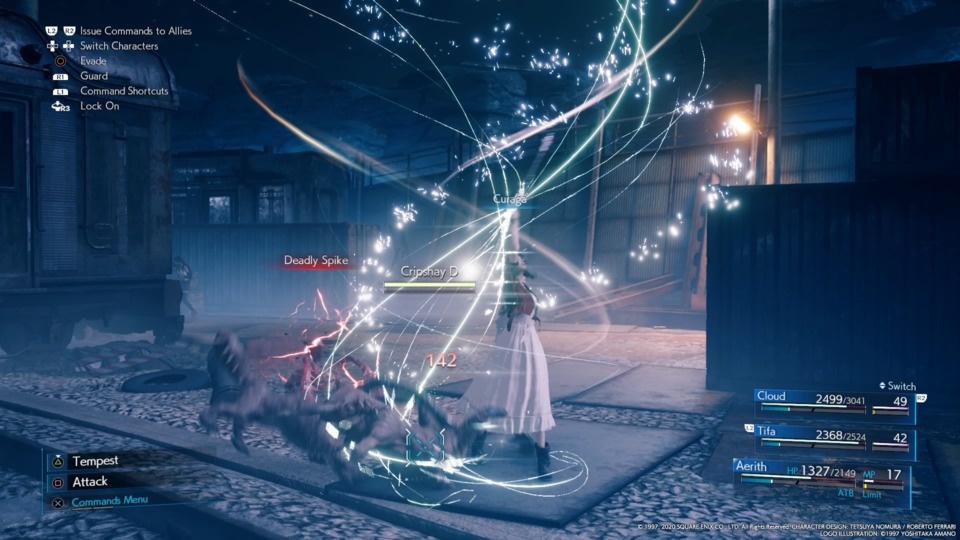
Alternate Franchise Examples - I will go with Aerith and the Remake version of her at that. This next point will be slightly controversial, but Aerith is one of my least favorite characters in Remake and Rebirth, though I always feel like she needs to be in my party. Pulling off her combos and Limit Break is a genuine pain, as they require you to play around with buffs and debuffs or demand a lot more timing and careful planning than the other characters you can control. Having her deal even a fraction of damage on par with everyone else's primary attacks is also not worth the effort. And yet, you must acknowledge how much you need her because not having a designated healer is often wholly untenable. Sure, when things are going well, and everyone is at max health, you feel like she sits in the corner twiddling her thumbs. But when shit does tits up, she's there much like the Final Fantasy III White Mage to save your ass! At least you don't have to worry about her burning spell slots to get through Mini-based dungeons.
Black Mage - [Rating: B+]
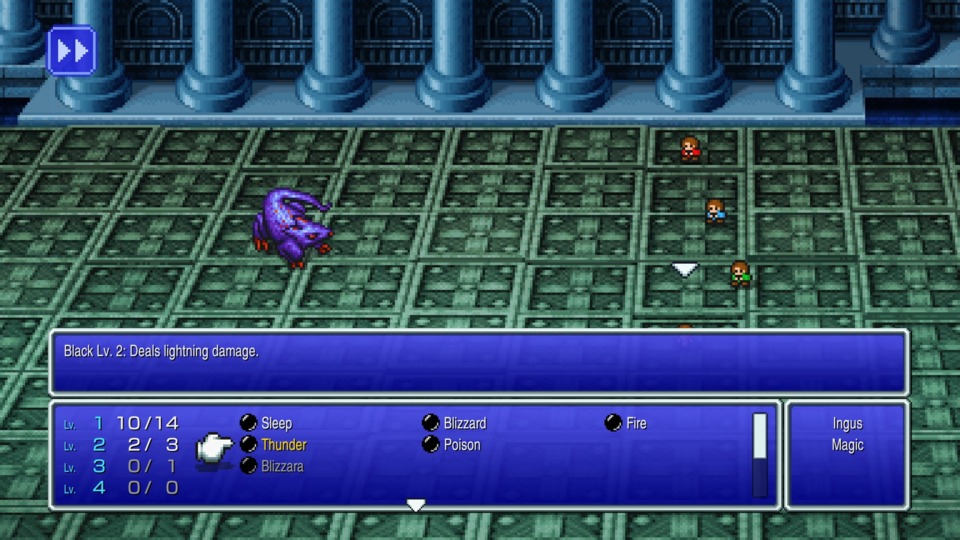
There's an awkward period at the start of the game when the Black Mage will probably deal more damage than any other job assignment in your party. It is highly recommended that you have at least one in your party because so many of the dungeons and bosses are weak to at least one of the game's core elements. Even the Warrior takes some leveling and equipment gathering before it takes its role back as your best damage dealer. Still, the limiting spell slot situation, especially at the start, prevents you from relying on Final Fantasy III's Black Mage for too long. The result is that the Black Mage takes a backseat when you are slogging through dungeons unless you find yourself in a pinch and want bad stuff to go away quickly. Then, when you get to a boss, you burn everything they have at their disposal and watch these big epic battles melt away in seconds. Despite all of its limitations, it is still an asset. Curiously enough, the Black Mage can use bows, enabling it to do more physical damage than your White Mage while staying in the back row.
Changes for the 3D remake - Every criticism I made about the 3D remake's version of the White Mage also applies to the Black Mage. However, things are slightly worse with the Black Mage because at least your starting cure spell gets the job done, and you start with plenty of level-one spell slots. With the 3D remake's Black Mage being afflicted with the same problem of having fewer spell slots and having a slower spell slot growth rate for its first thirty levels than in the Famicom version, it feels utterly handicapped for at least two hours. Remember, because the 3D remake was designed for the Nintendo DS, it displays fewer enemies, and those enemies get more attacks and larger pools of HP and MP as compensation. So, having a Black Mage that does the same amount of damage but with fewer tools at the onset is an unreasonable burden, and getting this job to tread water is zero fun in the 3D remake. Nonetheless, you need a decently leveled Black Mage to surpass some more demanding bosses in the 3D remake. So, you usually have one in your party, even if they feel like a complete hindrance. Also, the Famicom version allows Black Mages to use Daggers, but the 3D version does not. I don't know why someone saw fit to do this in the 3D version, but it sucks not having a viable DPS weapon option for the Black Mage for no reason.
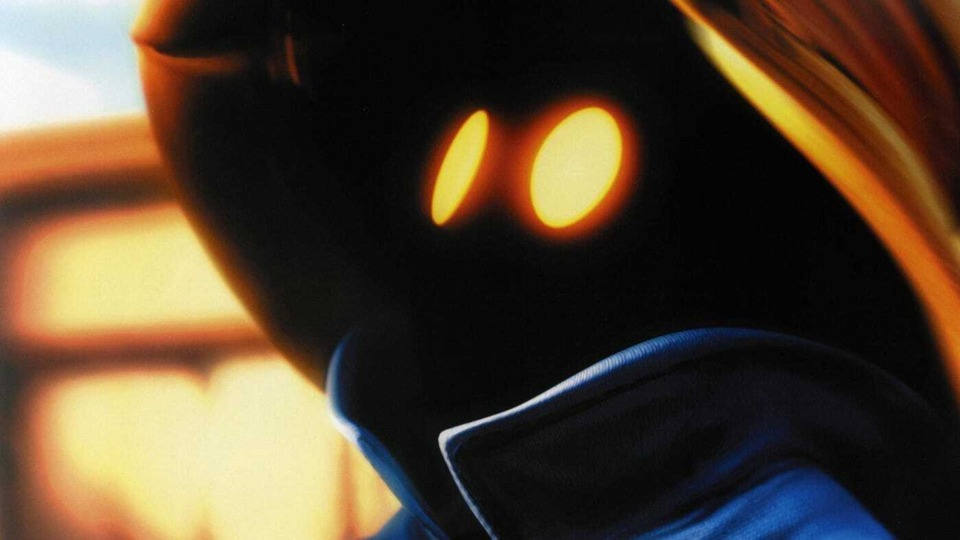
Alternate Franchise Examples - This category is not even a contest. It's Vivi. I want to throw a bone to all of you Final Fantasy XIV fans out there and give props to Lalai Lai. Lalai is a new gold standard for the Black Mage that has done a phenomenal job of communicating the job's conventions to a new generation. If I wanted to pick a character that exemplifies all of the negative trappings of the Black Mage job type, especially the problems I cited with balance in III's 3D remake, I would have gone with Palom in Final Fantasy IV as getting them to not die in two hits is a colossal feat. And what do you get in return when you stop that from happening? A sniveling brat that doesn't so much as give you a casual thanks for your hard work. Yet, Vivi perfectly embodies everything the Final Fantasy III team tries to accomplish with its Black Mage. Like III's Black Mage, Vivi starts as a liability and rises to respectability and confidence through hours of work and patience. Narrative-based character growth married with your in-game progression in a Final Fantasy game? HOLD THE PRESSES!
Red Mage - [Rating: D+]
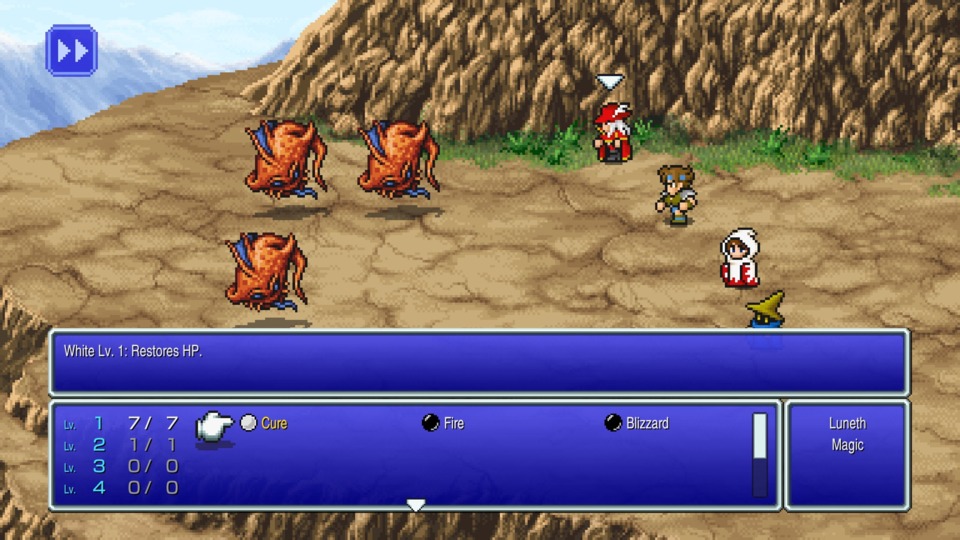
What a bummer. It seems the Final Fantasy III team interpreted the adage "jack of all trades, master of none" literally. Lacking the upside the Red Mage has in Final Fantasy I and V, Final Fantasy III's version of the class has little reason to be in your rotation when the unadulterated versions of your starting jobs are downright better. Cool, it can use swords, armor, and magic, but your options are so limited you prefer sticking with anything else. For example, while it can use swords, it can only use the most basic versions of that weapon type, which often means it cannot take advantage of new equipment with fun or critical buffs that make upcoming dungeons easier. Worse, its spell slots are puny compared to every other magic-casting class. You can still do decent damage with a Red Mage, but there's no shaking away the feeling that the class feels like a trap. That's doubly the case when you consider the original Final Fantasy III Red Mage can only use up to level four spells.
Changes For the 3D remake - The 3D remake fixes almost all of the Famicom version's problems with the Red Mage. The first fix involves the 3D remake letting Red Mages use up to level five spells. It also adds more exotic weapons to the Red Mage's list of equipable items. They curiously don't have a unique ability like other jobs, but the Red Mage is a more balanced and versatile job overall. It's not exactly the sexiest update in the 3D remake, but quite possibly one of the most effective as the Red Mage goes from being one of the first jobs you discard to one that functions as a proverbial pinch hitter. Say you're tackling a boss and don't know if it will resist physical or magical damage. Having one of your characters be a Red Mage means you always have combat alternatives for the battle.
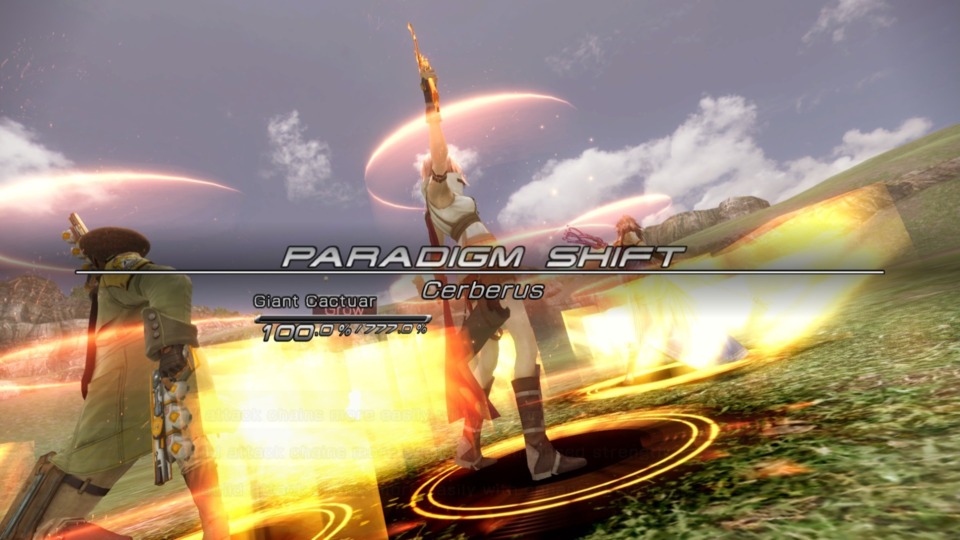
Alternate Franchise Examples - Alright, I have two picks. First, I can't help but think of Ritz from Final Fantasy Tactics Advance. Ritz is officially a Red Mage hybrid, but despite her official character art always depicting her holding a mage's staff, in-game she uses rapiers to deal decent, albeit comparatively weak, physical attacks. Her utility in Tactics Advance lies not in her ability to do anything exceptionally well but instead in her ability to bring almost everything to the table, so no stone is ever unturned when you find yourself in combat. She covers your bases, which is usually the biggest draw of the Red Mage in Final Fantasy games.
Similarly, you have Lightning in Final Fantasy XIII. She is the only character that starts as a Commando/Ravager/Medic, practically making her a Red Mage. She can build up the chain gauge to any enemies you encounter, deal massive damage to enemies that have filled their meter and are stunned, and heal your party members when they are in a bind. She, by herself, does everything you need in a battle to be successful. The game has her start with these three jobs because they often have her in parties that lack one of the game's core combat mechanics, especially during that awful slog where everyone is paired up into groups of two.
Fire Crystal Classes
Thief - [Rating: C-]
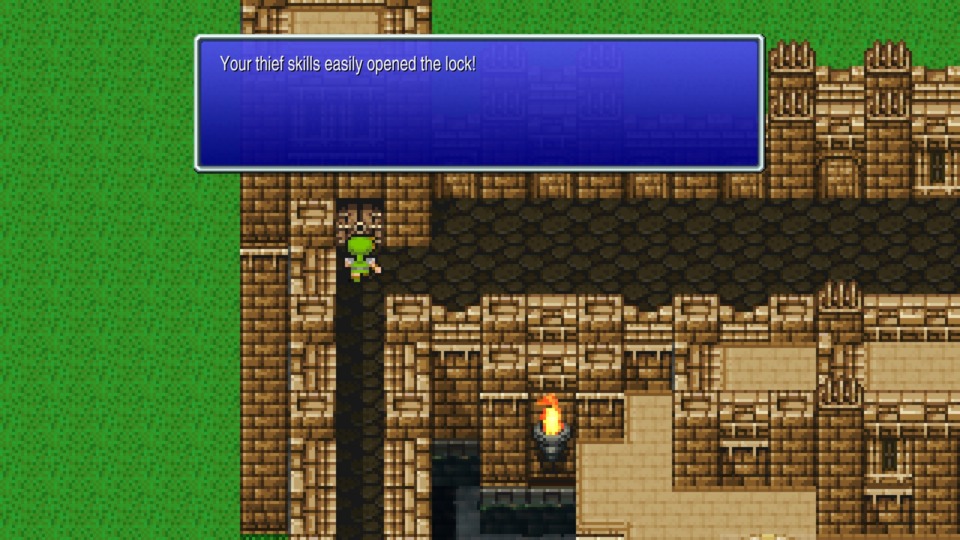
How much do you run away from combat in the JRPGs you play? Your answer to that question highly influences how you rank Final Fantasy III's Thief. The Thief feels like a mess outside of having better rolls on running away from trash mobs. I would swap to one when I encountered locked doors, which the Thief can handle without using Magic Keys, but those doors are rare on the game's main path. Even more peculiar, the Thief's best equipment does not start unlocking until the temple after you unlock it, which is A CHOICE! Nonetheless, this game a breeze when you can run away from shit. Having a Thief in the party ready to toss everyone out of combat when you have had your fill with dungeons is clutch. But outside of that, you're better off using any other job, excluding the Red Mage, at least at this point in the game.
Changes For the 3D remake - Here's another one of the weirder balance changes in the 3D remake. While the Thief unlocks at the Fire Crystal in the Famicom and Pixel Remaster versions, the 3D remake has them unlock at the Wind Crystal. Honestly, the 3D remake is on the right side of history. Being able to flee non-boss battles more readily is a handy tool, especially during the Mini dungeons, which already limit what you can do in battle. Steal is still a debatable ability as the enemies in the 3D remake, and all versions of the game for that matter, usually only provide basic store items, and your success rate when using the steal command is lower than it should be, regardless of your job proficiency or level. Besides the Thief getting a more balanced stat growth than they did in the original game, its unlock placement is the only significant change here.
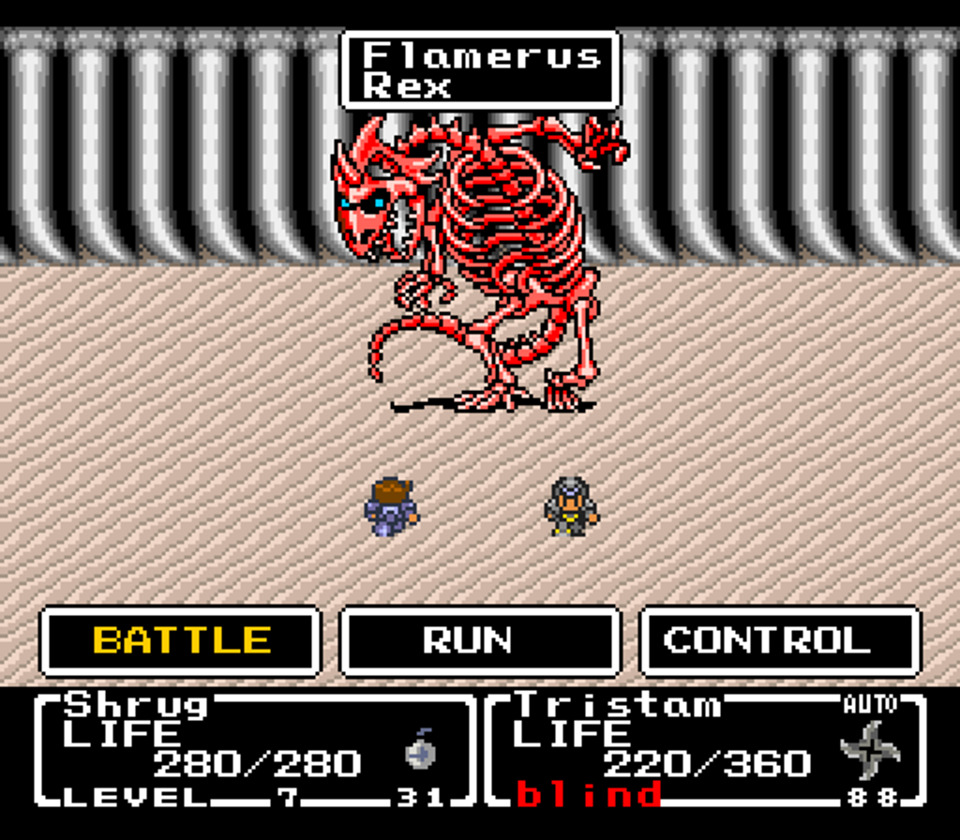
Alternate Franchise Examples - Zidane, Yuffie, Locke, Balthier, and even Rikku are all examples of Final Fantasy thieves done right. Many of these characters have the Steal command and can fill your coffers with loot and essential usable items that may prove helpful. Locke gets points for having the ability to pick locks and open doors without using items. The thing is that all of these characters are too good to be placed next to the Final Fantasy III Thief. It does them a disservice. As a result, the comparison I will make is to quite possibly one of the weakest and worst versions of the Thief character type in the Final Fantasy series, as their stumbling points echo all of what you experience with the Thief job in Final Fantasy III. That comparison is none other than Tristam in Final Fantasy Mystic Quest. In Mystic Quest, Tristam is one of the game's guest characters and is, by a country mile, the one you tag along with for the shortest time. Due to how little he accompanies you, he has the most negligible stat growth in the entire game, and all of his mechanics seem relatively half-baked. In fact, because of his paltry stat growth, your main character will likely be better than him when you encounter him a second time. If it were not for Alus in Final Fantasy II, I would have felt inspired to call him the Prince of Cannock of the Final Fantasy series.
Knight - [Rating: A]
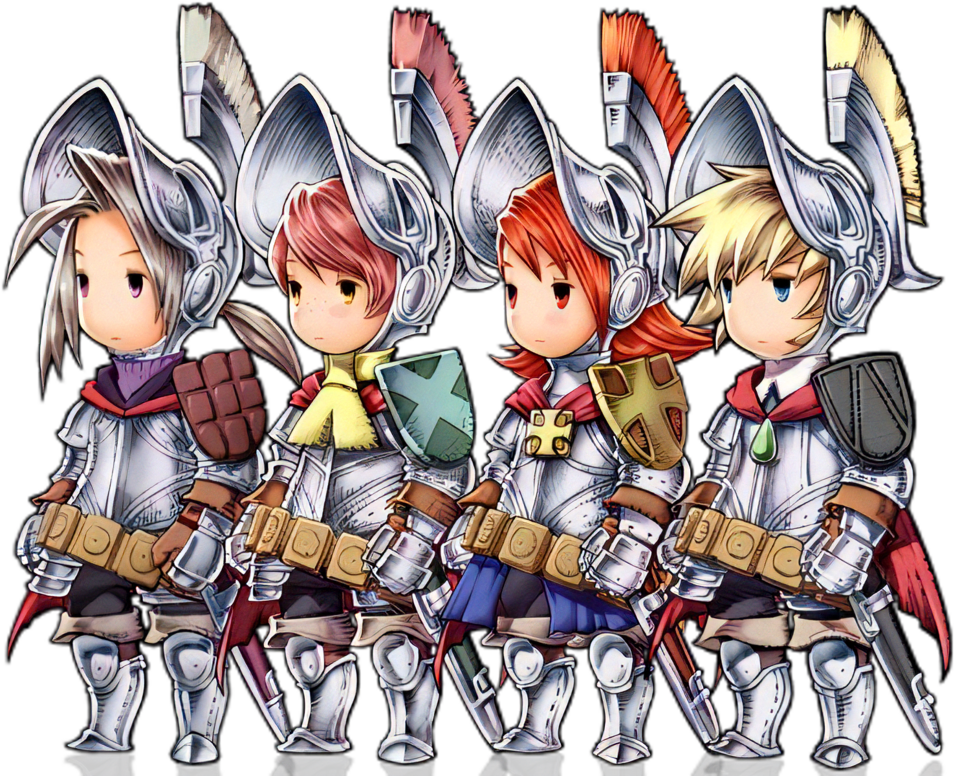
Final Fantasy III's Knight is an imperfect beast, but a beast nonetheless. I'm not the biggest fan of the Knight's unique abilities, which allow it to take damage intended for low-health allies, or its souped-up version of the Defend command, which results in your character only taking one damage if they use that command. Nonetheless, it hits like a truck, and the fact that it can dual-wield swords means it becomes one of your most reliable damage dealers for almost the entire game. Its armor options are incredible, in addition to the weapons it can use. The job's stat growth is also well-rounded, though it heavily skews towards the martial class stats. That consistency means that it only gets replaced once you unlock the Ninja class, as the Water Crystal martial classes have some quibbles or problems with equipment costs that prevent you from entirely replacing the Knight. Overall, it is a fantastic job.
Changes for the 3D remake - I have no idea why the 3D remake does this, but its version of the Knight can use level one White Magic, but only the three spells tied to that tier. Those spells are Cure, Poisona, and Sign (i.e., a spell that provides a copy of the world map). The 3D remake also makes the Knight's improved Defend command buff far less straightforward and significantly worse. Instead of it being a flat one damage whenever you use it, the 3D remake uses a formula that calculates your job level and deducts a percentage from incoming damage based on that formula. It's needlessly complicated, but the Cover support ability remains almost the same as in the original game. It is still an excellent job, as its core utility remains as crucial as ever, especially with harder-to-kill enemies populating every corner of the game. Nonetheless, it's one of the odd examples of a job from the Famicom version being debuffed in the 3D remake.
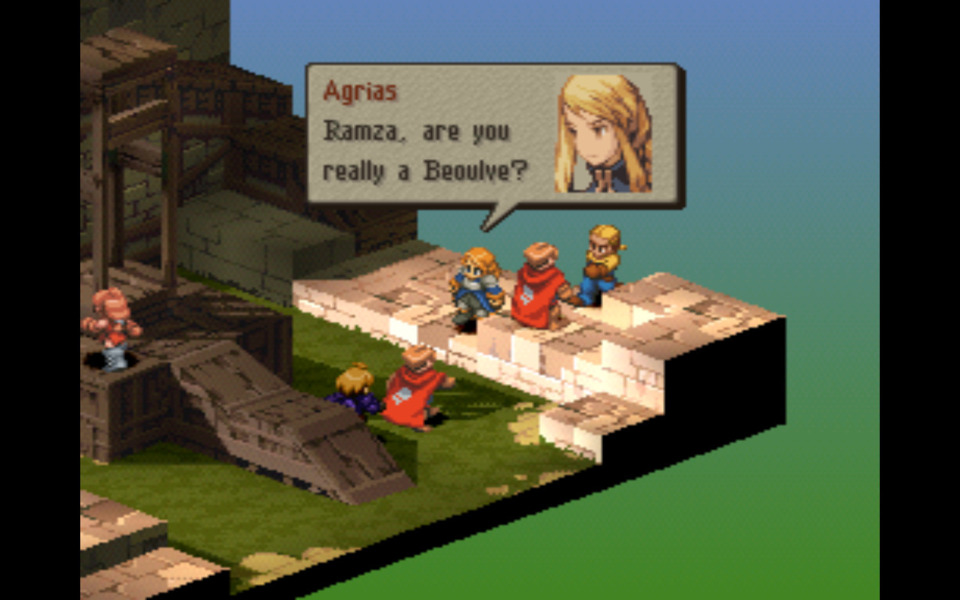
Alternate Franchise Examples - Let's go with Agrias from Final Fantasy Tactics and Cloud from Final Fantasy VII! Agrias hits hard with some of the best swords in the game, and her techniques allow her to attack enemies from afar. You benefit from using those abilities, but her main gimmick is that she packs a wallop when she lands an attack and sports armor that keeps her from taking too much abuse in return. She also does things to keep those around her safe. Cloud is a more orthodox pick. While Agrias has spells and techniques that draw her from her usual sword-and-board diet, even in Rebirth, you want Cloud swinging his giant Buster Sword, and if he isn't doing that, you're wasting your time. Sure, the Materia system allows anyone to shoot lightning from their eyes or ice shards from their nipples, but for all intents and purposes, Cloud is a Knight whose main draw is packing on armor and hitting things with his sword. When he isn't hitting things with his sword, he's helping you prevent his allies from falling in battle. His design's straightforwardness is part of why you don't mind him being a character you are permanently locked into using for most of the games he is in. He gets the job done and makes everyone around him better as a result.
Ranger - [Rating: C+]
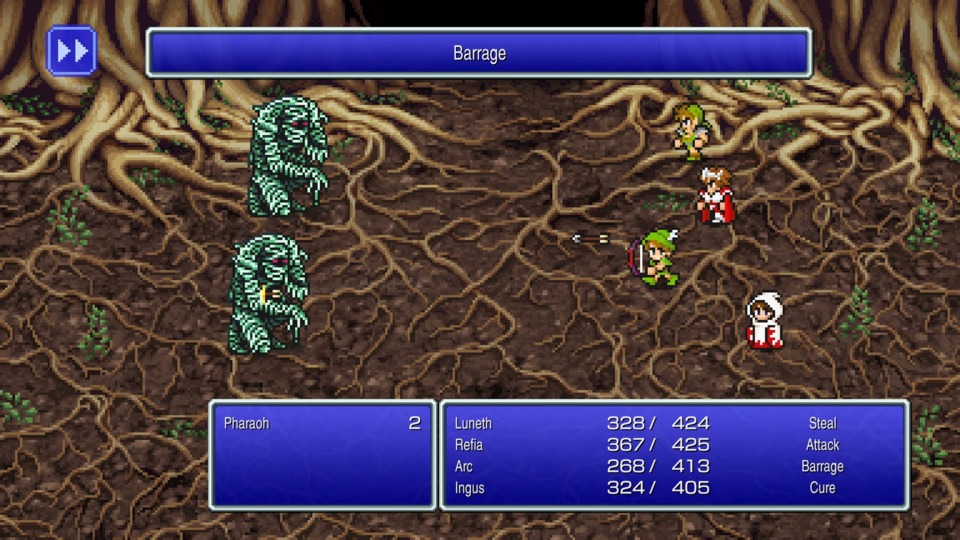
The Ranger is another job that errs its way into the "It's fine!" category. The Ranger's big problem is its short shelf-life. For a brief moment, it has one of the few non-magic crowd control options in the form of its "Barrage" ability. However, even when you pick it up, your designated Black Mage is slowly but surely growing its spell slots, and there are better crowd-control options with the introduction of jobs locked behind the Water Crystal. Furthermore, the randomness of Barrage and its sometimes paltry damage output limits its usefulness as the game progresses. The good news is that the Ranger can use White Magic up to level three spells. Having a pocket Cura on hand is incredibly useful, and having a non-White Mage use Mini for entering and exiting Mini dungeons takes a load off your White Mages. Ultimately, it has a time and place, even if that time and place is the size of a pea.
Changes for the 3D remake - OH, IT'S SO MUCH WORSE! First, the 3D remake completely removes the Ranger's White Magic, plummeting its usefulness immensely. Likewise, the Barrage ability is now dependent on your character's job level with Ranger, but even at higher levels, it does less than average damage per hit. The Ranger's stat growth is even worse in the 3D remake, but that's most likely in reaction to the Ranger having an absurd stat growth in the Famicom version, and the Pixel Remaster strikes a nice balance between the two. In the end, the Ranger is far more skippable in the 3D remake than it is in any other version of Final Fantasy III. That's doubly so, considering that the Ranger's glasscanon sensibilities are even more brittle in the 3D remake.
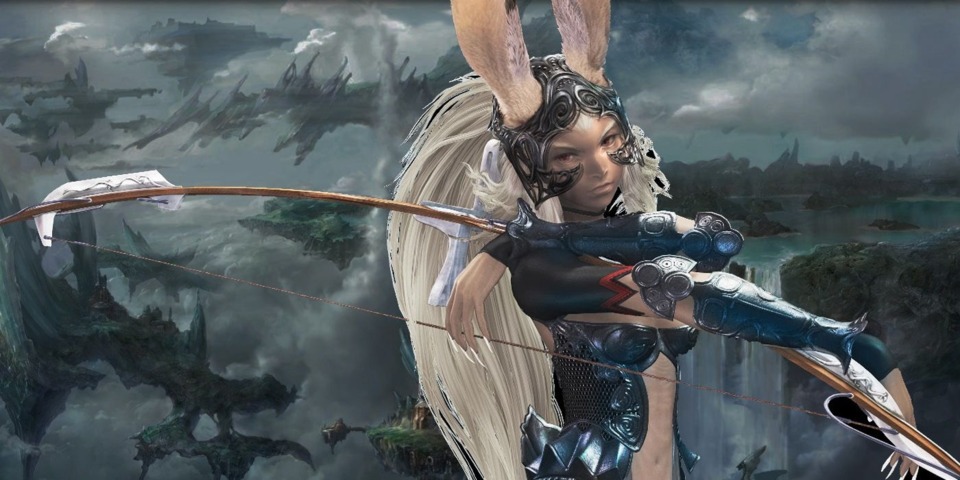
Alternate Franchise Examples - My thought process here is to consider not just Rangers in the series but long-distance attackers who can't take a beating. For example, Barret is a tank that can take a beating on top of being a guy with a machine gun on his arm, so I'm not considering him here. As bizarre as this sounds, I will opt for Ace from Type-0 and Fran from Final Fantasy XII. Picking a Final Fantasy XII character is dicey as, if you get the appropriate licenses, you can have them do and use anything you wish. Nonetheless, all depictions of Fran show her using bows, and her starting stats in the original version of Final Fantasy XII were among the lowest of all your other party members. Many surmise this was a passive hint that she was a long-ranged fighter. Her stats are modified in the Zodiac Job System versions of Final Fantasy XII, but her overall HP is still below average. Ace from Type-0 might sound like a shitpost, but hear me out. He attacks using a deck of cards and tends to stay away from the middle of battles as he has incredibly low HP. He also has an insane evasion stat, and his ultimate ability allows him to teleport wherever you want, which mimics that of the Ranger in Final Fantasy III. However, just like the Ranger, when he does take a hit, you usually have to burn a turn healing to get him out of critical health. Wakka from Final Fantasy X would also be a candidate. Finally, let's not pretend that Edgar's Auto Crossbow isn't a copy-paste job of the Ranger's Barrage ability.
Scholar - [Rating: B-]
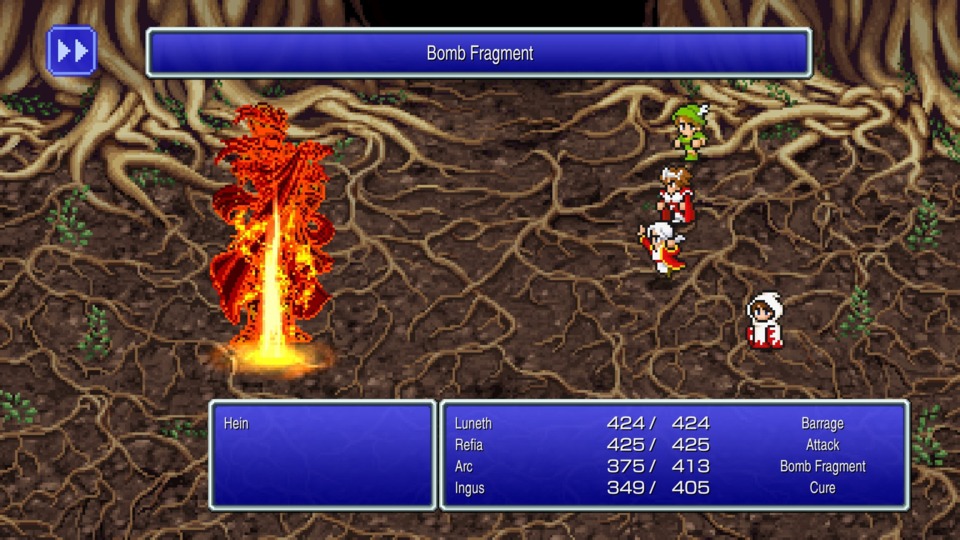
Of Final Fantasy III's "gimmick classes," the Scholar is the one that maintains its self-worth the longest. Having Scan on tap is helpful, and there are boss encounters where having a Scholar is incredibly important. What annoys me in the Famicom version is that checking for enemy weaknesses (i.e., Scan) is one ability, and checking the enemy's HP (i.e., Peep) is an entirely different one. The Pixel Remaster version mercifully merges both into a single "Study" command. And herein lies a MASSIVE PROBLEM for me and this feature. The Scholar remains, BY FAR, the Final Fantasy III job that has changed over time the most. The NES/Famicom version is primarily a DPS job that can scan enemies but mainly uses books to deal elementally themed damage. That's it.
The Pixel Remaster doesn't give you the Famicom version of the Scholar. Instead, it gives you a weird hybrid version that merges parts of the original with mechanics and ideas exclusive to the 3D remake. For example, the Scholar in the Pixel Remaster has the "Alchemy" command, a modified version of the 3D remake's "Item Lore" ability. Be warned, this version of "Alchemy" does NOT involve combining two items to make a more potent third one as you do with future versions of the Alchemy or Mix command. Instead, when using items during a battle, they are more effective. For example, a Scholar who uses a Hi-Potion will restore 1,000 HP instead of the usual 500 HP, which applies to offensive items as well. However, because the Pixel Remaster's Scholar has this new ability, it hits significantly less than the Famicom version. The Famicom Scholar's core Strength stat is almost always four to five points higher than its Pixel Remaster counterpart, and that's nothing to scoff at in practice. This situation is a weird one; there's no doubting that, but it gets even weirder because now we need to talk about the Scholar abilities only seen in the 3D remake!
Changes for the 3D remake - I spilled the beans, but the Scholar is an entirely different beast in the 3D remake. First, they can use Black and White Magic but only up to level three spells. Second, Scan and Peep are combined into a single "Study" command, but this ability also removes ANY AND ALL beneficial status effects on the enemies you use it on. You only have this in the 3D remake, but ultimately, it means the Study command also casts Dispel. Moreover, because this is a special ability, it does not spend MP or spell slots. That alone makes the Scholar one of the best jobs in the 3D remake. Finally, the 3D remake gives Scholars the "Item Lore" support ability, which, again, doubles the potency of healing and offensive items. The result of these changes is that the Scholar skyrockets from its mid-tier status in the Famicom version to a much higher-tier status in the 3D remake. Even if you don't care about knowing the overall HP of a boss, you can immediately get rid of any buffs they might be sporting in a single move. You can use this to your advantage, as some bosses are programmed to buff themselves as a move if they detect they don't have any at the start of their turn, which can cut the combat efficacy of bosses in half. And when you consider almost all bosses get an additional move in the 3D remake, that proves to be enough to turn the tide of battles.
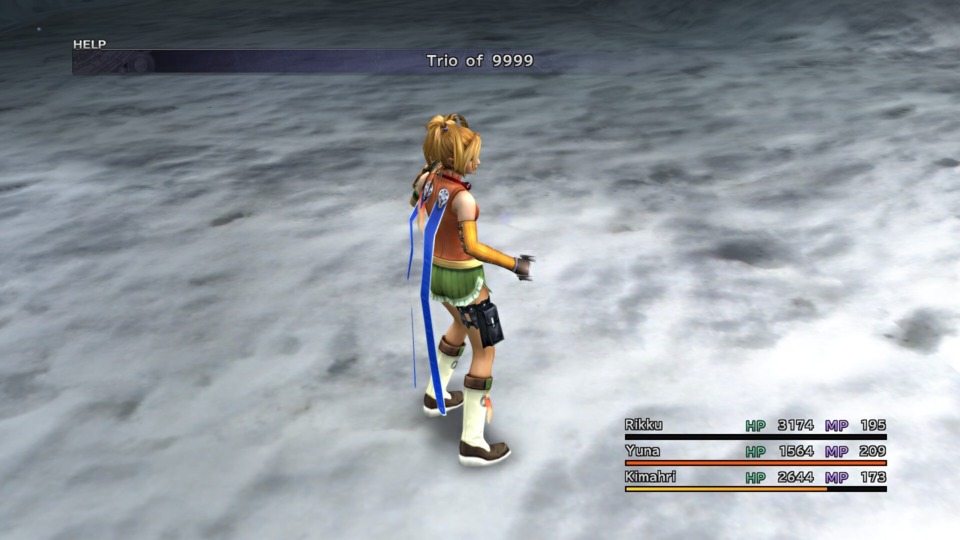
Alternate Franchise Examples - Well, which version of the Scholar am I trying to compare to? Oddly enough, Atlus, not Square, has remained obsessed with JRPG parties having a designated researcher who relays enemy weaknesses and strengths on a handy information sheet. Nonetheless, you can tell how parts of the Scholar's design would go on to inform how Chemists work in the Tactics games. There's also that Tonberry Scholar in Final Fantasy XIV. Final Fantasy XI also has a pretty in-depth Scholar class that sported a fantastic quest with some fun pivots and worldbuilding. Nonetheless, Rikku comes to mind the most in terms of a Final Fantasy character that gains most of their combat usefulness through items. Yes, most of that stems from her utterly BUSTED Mix ability, which I have been on record saying is the only way I feel comfortable beating Yunalesca. Nonetheless, Rikku is a character that draws you to merchants in an effort to discover new recipes that may prove pivotal in battles, much like the 3D and Pixel Remaster versions of the Final Fantasy III Scholar.
When it comes to the original version of the Scholar, I don't know. The closest thing to the OG Scholar I can think of is the Scholar in Final Fantasy: The 4 Heroes of Light. They do extra physical damage when using books, much like how the job functions in the Famicom version of Final Fantasy III. Still, they are ultimately limited to that of an equipable crown. Making a character in Final Fantasy XII that uses Measures after assigning them the Machinist job has some Scholar vibes, but barely. The Scholar job has been a "work in progress" since its debut. I hate to end this episode on this note, but do you have any better comparisons? I'm at a loss for words here.
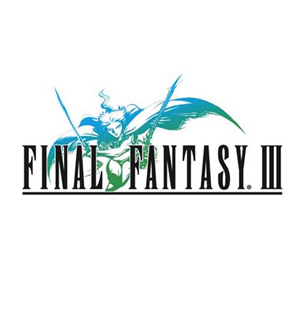
Log in to comment